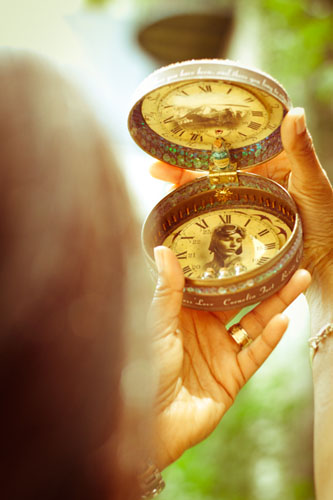Book Review of Joan Sommer’s & Ascha Drake’s:
The Joseph Cornell Box: Found Objects, Magical Worlds (2006)
A Thoughtful Tribute to Joseph Cornell
It was by chance last week, while putting to use the gift card I got from my sister for my birthday that I stumbled across Joan Sommers’ and Ascha Drake’s The Joseph Cornell Box: Found Objects, Magical Worlds. Initially, what caught my eye was the really neat box it was housed in: its cover is a façade of one of Cornell’s boxes. To my delight upon removing the book I uncovered a real multi-shelved box inside with which to make my own Cornell-inspired art work — oh, I just knew my friend Olive, an equally ardent fan of his, would be so envious, of my latest find! I dashed off with it, delighted to add it to my modest stash of books on the great collage/assemblage artist. Sommers and Drake, two elementary school teachers, were inspired to write this book while teaching and exploring Cornell’s work with their own students. Addressing the reader as a fledging collage artist, the book includes a brief account of Cornell’s personal life, his connections to art history, his artistic practice and tales related to the subjects that drove his obsessions. It also contains a useful glossary of collage-related terms; a listing of Cornell’s work around the world and an excellent reading list. I loved the book’s easy-to-read style – I devoured it in a day! An especially attractive feature of the book is its cool design layout. Each page is carefully crafted in the manner the artist himself might have assembled it replete with: star charts, butterflies, birds, time pieces, buttons, scrabble letters, old fashioned labels and type-face, antique/vintage papers and photographs – symbols that familiarize students with the artist’s frame of mind and historical context. Memorable photos in the book include a glimpse of Cornell’s basement studio crammed with boxes as well as a memorable image of the late artist’s kitchen window taken by noted photographer Duane Michaels – an eerily fitting portrait. This book is great for the obsessive Cornell fan. It includes a list of his favourite foods as well as a New York City map detailing the artist’s favourite haunts. Highlighting the city as a kind of “classroom” for the self-taught Cornell is a strategy all aspiring artists can benefit from. After whetting our appetite with much insightful information, readers are given detailed instructions and creative tips on how to construct their own box assemblages. If this isn’t enough, as revealed earlier, the authors also include a box and materials for creating your own assemblage! I have built Cornell-inspired assemblages in the past and I must say this book really reignited my passion for making them. I highly recommend it for children/teens (age 10 and up) and adults interested in taking their collage projects to the next stage of assemblage or anyone interested in gaining some preliminary insight into Joseph Cornell.


Leave a Reply